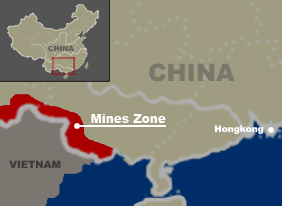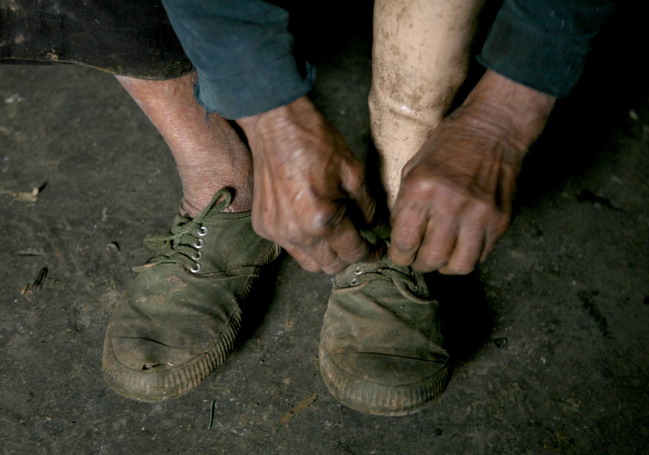


Walking on the railway tracks is a safe shortcut in a place where an untrodden path could spell disaster.
 Despite the fact that the Sino-Vietnam war has ended some 30 years ago, villagers living along the frontier are still dealing with its mortal consequences. Landmines planted along the two countries' 1,347km border during the war continue to strike unsuspecting villagers. The mines are scattered in the fields, by the river, behind rocks, on footpaths...
Despite the fact that the Sino-Vietnam war has ended some 30 years ago, villagers living along the frontier are still dealing with its mortal consequences. Landmines planted along the two countries' 1,347km border during the war continue to strike unsuspecting villagers. The mines are scattered in the fields, by the river, behind rocks, on footpaths...
Sharen village in Yunan province tops the list of casualties. Many villagers are one-legged or have no leg at all after stepping on landmines, with some maimed since childhood. According to a survey done in the 1980s, there were only 78 legs counted among the 87 villagers living there.
As a measure of self-protection, villagers have slowly withdrawn from the frontier. Over the years, abandoned villages and the once-productive fields have been reclaimed by wilderness.
The Chinese government provides aid to maimed villagers in the form of a special allowance--around 100 yuan and 25kg of rice per month. Some better-off villagers have resorted to buying Vietnamese wives with a few thousand yuan for disfigured family members, but many remain single and in poverty.

A landmine warning sign in Sharen village

The singl life of maimed villagers is a little more bearable with canine companions.

The wooden stool serves as a wheelchair for this victim who has lost both her legs.

A villager is keeping her child company at home.

A landmine victim is putting on a shoe for his artificial limb.
***
Since 2004, EO's senior photographer Luo Jian has been working on "China Corner", a photo project that focuses on overlooked communities impacted by China's urbanization and other processes. Different themes under this project will be featured in Photo Essay once a week. Luo is a graduate from the China News Academy. The accompanying essay was written by staff editors Ren Jie and Lin Li.